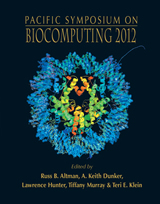SSLPred: Predicting Synthetic Sickness Lethality
Nirmalya Bandyopadhyay, Sanjay Ranka, and Tamer Kahveci
CISE Department, University of Florida, Gainesville, FL 32611, USA
Email: {nirmalya, ranka, tamer}@cise.u.edu
Pacific Symposium on Biocomputing 17:7-18(2012)

Abstract
Two genes in an organism have a Synthetic Sickness Lethality (SSL) interaction, if their joint deletion leads to a lower than expected fitness. Synthetic Gene Array (SGA) is a technique that helps in identifying SSL values for pairs of genes in a given set of genes. SSL interactions are useful to discover the co-expressed gene groups in the regulatory and signaling networks. Also, they are used to unravel the pair of pathways (subset of physically interacting genes) that substitute the functions of each other. Generating an SGA entry is costly as it requires producing and monitoring a double mutant (a progeny with two mutated genes). Generating a comprehensive SGA can be very expensive as the number of gene pairs is quadratic in the number of genes of the corresponding organism. In this paper, we develop a new method SSLPred to predict the SSL interactions in an organism. Our method is built on the concept of Between Pathway Models (BPM), where majority of the SSL pairs span across the two functionally complementing pathways.We develop a regression based approach that learns the mapping between the gene expressions of single deletion mutant to the corresponding SGA entries. We compare our method to the one by Hescott et al. for predicting the GI (Genetic Interaction) score of Saccharomyces cerevisiae (S. cerevisiae) on four benchmark datasets. On different experimental setups, on average SSLPred performs significantly better compared to the other method.
[Full-Text PDF] [PSB Home Page]